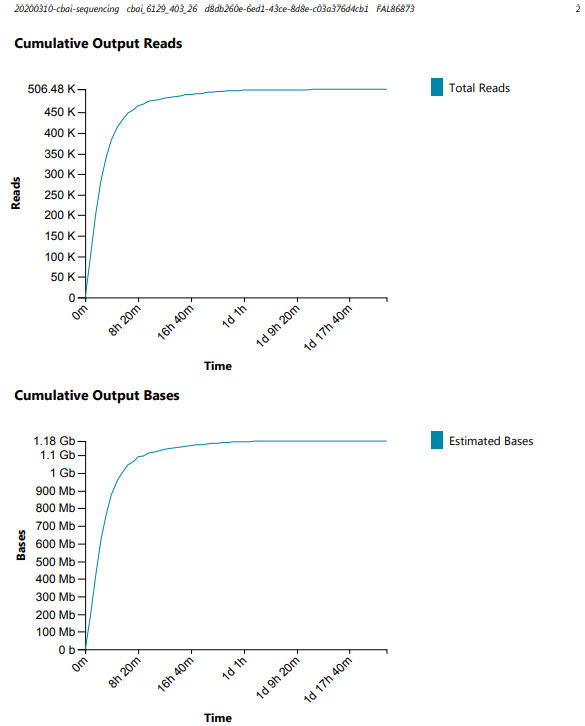After getting high quality gDNA from Hematodinium-infected C.bairdi hemolymph on 2020210 we decided to run some of the sample on the NanoPore MinION, since the flowcells have a very short shelf life. Additionally, the results from this will also help inform us on whether this sample might worth submitting for PacBio sequencing. And, of course, this provides us with additional sequencing data to complement our previous NanoPore runs from 20200109.
The sample DNA was prepared according to the protocol for the Rapid Sequencing Kit (SQK-RAD004) and run on a FLO-MIN106 (ID: FAL86873) flowcell. Data acquisition was set to run without basecalling for a period of 48hrs. This will make sure the raw Fast5 output files will be preserved (not sure if they’re saved or not when basecalling is enabled), but will require conversion to FastQ at a later date.
RESULTS
Output folder:
Fast5 directory:
Run report (PDF):


Well, the data looks fine to me, but I don’t have much to compare to. Compared to our previous run (which had degraded gDNA as an input), this is certainly a significant improvement:
~7x the total number of reads
~30x the total number of bases
~4x the N50
Will get the data converted to FastQ for downstream handling.